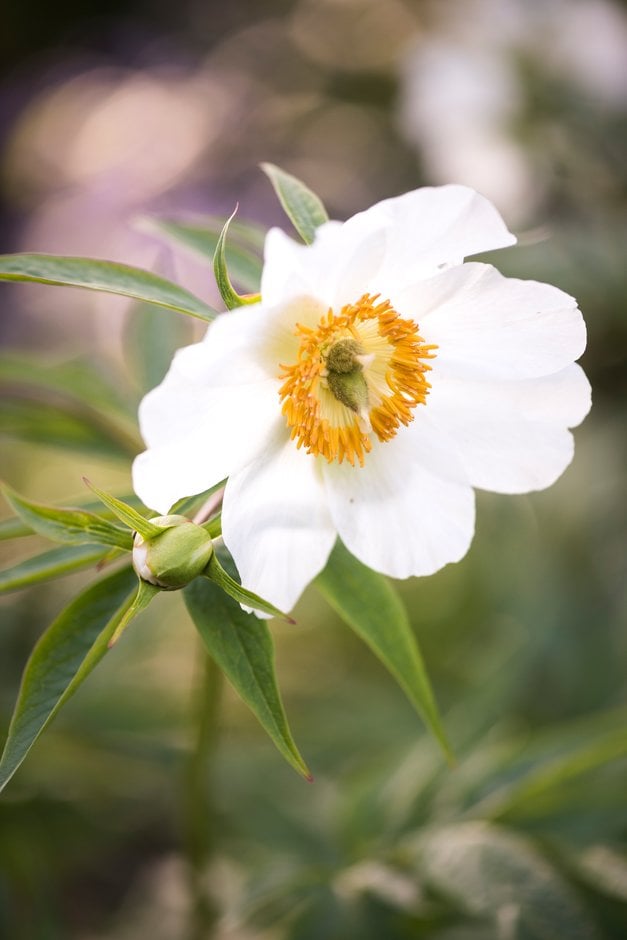Paeonia emodi

Himalayan peony
A clump-forming herbaceous perennial to 1.2m tall with dark green, glossy, divided foliage. Tall stems bear up to four, fragrant, white flowers with prominent golden-yellow anthers in spring; flowers are 8-12cm in diameter
Size
Ultimate height
1–1.5 metresTime to ultimate height
2–5 yearsUltimate spread
0.5–1 metresGrowing conditions
Moisture
Moist but well–drainedpH
Acid, Alkaline, NeutralColour & scent
| Stem | Flower | Foliage | Fruit | |
| Spring | White | Green | ||
|---|---|---|---|---|
| Summer | Green | |||
| Autumn | Green | |||
| Winter |
Position
- Full sun
- Partial shade
Aspect
South–facing or West–facing or East–facing
Exposure
Sheltered Hardiness
H6Botanical details
- Family
- Paeoniaceae
- Native to GB / Ireland
- No
- Foliage
- Deciduous
- Habit
- Bushy
- Potentially harmful
- Pets (dogs, cats): Skin irritant. For further information and contact numbers regarding pets, see the HTA guide to potentially harmful plants
- Genus
Paeonia may be herbaceous perennials or deciduous sub-shrubs with large, divided leaves and showy large bowl-shaped flowers, usually in early summer
- Name status
Correct
- Plant range
- N India, N Pakistan, Afghanistan
How to grow
Cultivation
Best in a deep, fertile, humus-rich soil that is moist but well-drained in a sheltered position in full sun or partial shade. See herbaceous peony cultivation
Propagation
Propagate by seed or by division in autumn or early spring
Suggested planting locations and garden types
- Cottage and informal garden
- Flower borders and beds
- Cut flowers
Pruning
Remove dead flowers as they fade, then cut plant back as the foliage dies down in autumn
Pests
May be susceptible to leaf and bud eelworm and soil-dwelling swift moth larvae
Diseases
May be susceptible to a virus, honey fungus, Verticillium wilt, peony leaf blotch and peony wilt
Love gardening
Sign up to receive regular gardening tips, inspiration, offers and more
View our Privacy Policy
Get involved
The Royal Horticultural Society is the UK’s leading gardening charity. We aim to enrich everyone’s life through plants, and make the UK a greener and more beautiful place.

